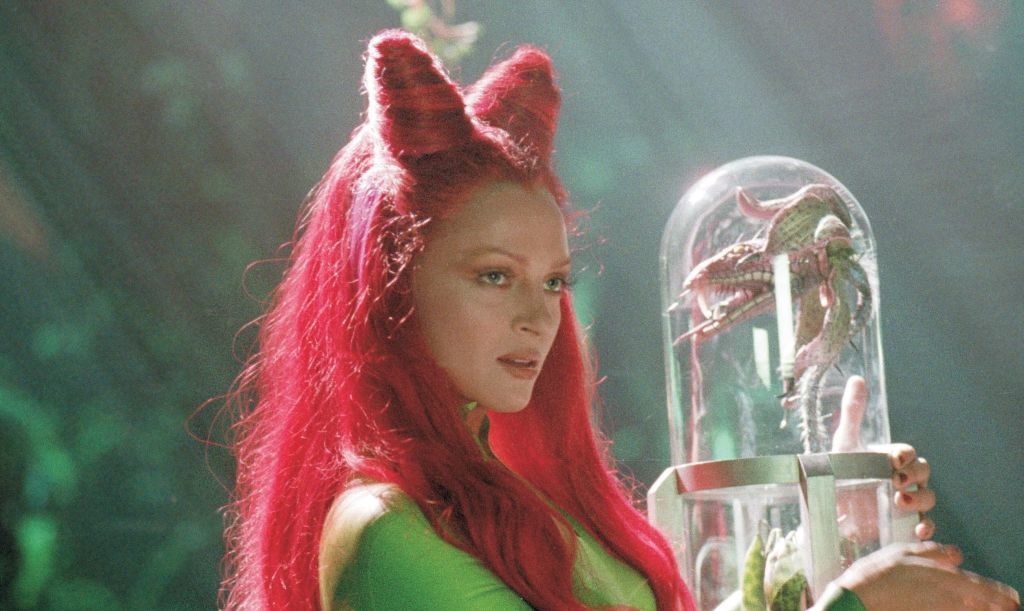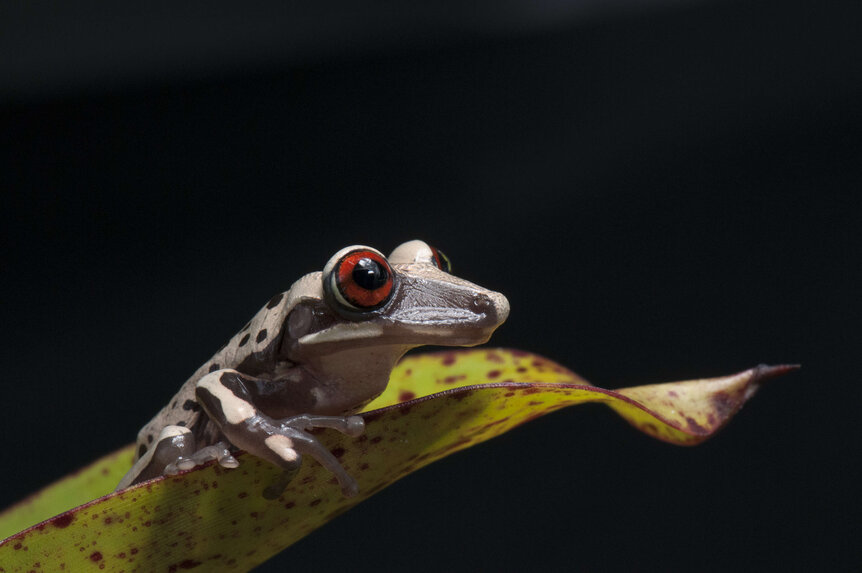How realistic are Poison Ivy's pheromones and toxic kiss?

Poison Ivy, one of Batman's most well-known villains, was created in 1966 by Robert Kanigher and Sheldon Moldoff. Originally intended as a love interest for the Dark Knight himself, Ivy was later fleshed out into one of the most well-rounded members of his Rogues Gallery. Unlike many of Gotham's villains, who seem happy to create chaos for chaos' sake, Ivy has an internal moral philosophy, prioritizing nature over human civilization, which puts her at odds with the authorities of Gotham.
Utilizing her communion with plants and a slate of organically produced biological compounds, Ivy wages a continual war to preserve the environment from human intervention. While her methods are varied, none are more famous than her mind-bending pheromones and the Poison Kiss. But Ivy's chemical tactics aren't unique to her. They are tried-and -rue methods of attack in the natural world.
MENTAL TRICKERY AND NICE SMELLS
In Batman canon, Poison Ivy is capable of seducing others through the use of pheromones. The result: Her targets (or prey) become less able to fend off her attacks, or even completely willing to submit to her demands.
It's an unusual but effective strategy for predator-prey relations. Why get in a fight if you don't have to?
In nature, however, pheromones are not typically used in predator-prey interactions. Pheromones are, by definition, chemicals that trigger a response within members of the same species. While this works in the Poison Ivy example since she's a modified human influencing other humans, any chemical interaction between inter-species predators and prey would not be accomplished by way of pheromones.
That isn't to say that this sort of interaction doesn't happen. In fact, one need only look to the deep oceans to find horrifying examples of semi-predatory pheromones in action.
There are fewer examples of animal mating practices more terrifying than those of anglerfish. You're probably familiar with anglerfish, with their massive jaws and glowing lures. They're the sort of animal that makes you wonder if life on Earth wasn't a total mistake. To see the face of an anglerfish is to see the sorts of things which appear, peering through darkened windows in your nightmares.
However, it's only female anglerfish that look so terrifying. The species is sexually dimorphous, meaning the males and females of the species are drastically different. In some species, females are more than 60 times larger than males.
During maturation, the females grow large, they get their famous teeth and lures, while the males remain small. Then the males, not well-suited for finding prey, begin the only hunt they'll undertake in their lives — the hunt for a mate. Different species do this in different ways, but some rely on a keen sense of smell to locate pheromones released by females.
Once a male anglerfish locates a mate, he uses specialized teeth to burrow into the belly of the female, at which point his body fuses with hers. Most of his body withers away, and their circulatory systems connect. The male becomes nothing more than a genetic loot box parasitically living off the larger, much more capable, female.
Everyone likes a free meal, but it usually doesn't come at the cost of all freedom and most of your body. Such is the life of the male anglerfish, and all because they followed their noses.
DEADLY KISS
Poison Ivy is well-known for sealing the death certificates of some of her victims with a kiss. Chemical compounds she produces in her body take up residence on her lips. While she seemingly has developed some resistance to these toxins, her victims aren't as lucky.
It's worth noting, here, the difference between venom and poison. While the two are often used interchangeably, they do have a difference, primarily in the delivery system. The shorthand is, if you bite something and it kills you or makes you sick, it's poisonous. If something bites you and it kills you or makes you sick, it's venomous.
Venom is delivered through an active process, usually via fangs, spines, or stingers. Poison is passive, living on or in the tissues of a plant or animal and must be touched or consumed. Poison Ivy's kiss lives in a sort of gray area. She delivers it intentionally, like a venom but it passes externally via contact, not through injection into the body.
Some interpretations of the character, most notably the live-action Batman and Robin, explain the killer kiss as being a result of Venom. Given what we know about the character, despite story nomenclature, the killer kiss is more accurately described as poisonous, not venomous. Regardless, the result is the same. Contact with Ivy's lips delivers a toxin capable of killing the recipient.
Such a result is not unheard of in the animal kingdom. In fact, a few dozen children took ill due to kissing frogs after the release of Disney's The Princess and the Frog. Though that was a result of salmonella, which is a bacteria, not a poison, there are toxic amphibians.
A number of species produce bufotoxins which are present on the skin and may have medicinal uses, but that doesn't mean you should go smooching them. More famous are poison dart frogs, which produce a poison volatile enough to kill you outright with a single touch. The golden poison frog, while only 1.5 centimeters, carries enough poison to kill several human beings. Many species of poison frogs, indigenous to South America, produce these toxins, capable of causing respiratory failure and paralysis, leading to death.
The poison these frogs carry is not produced natively in their bodies, instead, they acquire the poison from their diets, primarily from ants and other bugs they eat. Poison dart frogs kept in captivity, and fed on a diet of non-toxic foods, lose their toxicity.
Still, a kiss from a wild poison dart frog would send you into a downward spiral that even Batman couldn't save you from.
These frogs, however, don't actively court death in the way Poison Ivy sometimes does. While their poison is a potent defense mechanism, they rely more heavily on their coloration to ward off predators. Over generations, predators have come to associate their brightly colored bodies with the dangerous result of consuming them. Studies have shown that the more brightly colored a frog is, the heavier punch it packs. As a result, predators tend to stay away.
If you want a frog with a truly deadly kiss, there is no better candidate than the Bruno's casque-headed frog. It wasn't until recently that scientists discovered the toxic nature of these frogs. The frog is capable of delivering the toxin in a similar way to its brightly colored relatives, but it is also able to deliver it directly into the bloodstream via barbs on its mouth.
There is some debate about whether or not the casque-headed frogs are poisonous or venomous. They seem to be both, capable of both passive and active toxin delivery. The active delivery is achieved through a sort of violent kiss. Not only that, but the Bruno's casque-headed frog carries a toxin 25 times more lethal than a pit viper's.
In any event, we're probably lucky that human pheromones are subtle, if they exist at all, and that we're not capable of kiss-punching poisons into one another. Still, if you have to go, a lethal kiss isn't the worst way.






























